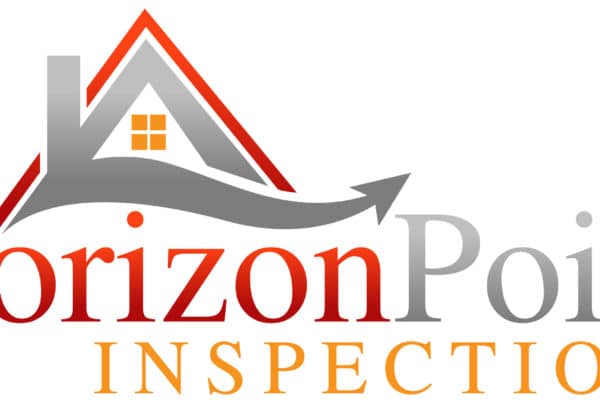
Is your family at risk for radon exposure?
While scheduling a home inspection, our clients often ask if radon testing is necessary or if we think they should have testing completed as part of their home inspection. Clients should always get their future homes tested for radon because, even if the home has a mitigation system. They will be able to assess whether the radon levels are within acceptable limits and, if installed, the mitigation system is working properly. In the following blog, we are going to discuss what radon is and why it is a concern for homeowners. We will also discuss its associated risk, how you can test for radon in your home and if needed, mitigation systems and costs for installtion.
What is Radon?
Radon is a colorless, odorless radioactive gas that can seep into homes from the ground. It’s a natural byproduct of the decay of uranium in soil and rocks. In Ohio, radon is a concern because it can accumulate in buildings, seeping through cracks in the foundation and open areas such as sump pumps. Long-term exposure to high levels of radon is a leading cause of lung cancer, especially among non-smokers, and prolonged exposure to elevated levels can pose serious health risks.
Testing for Radon
Clients should get their future homes tested for radon because it allows them to assess whether the radon levels are within acceptable limits. The EPA recommends a mitigation system if the radon levels in the home are an average of 4 pC/L or higher over 48 hours. Horizon Point Inspections conducts 48-hour radon testing as part of their home services. Horizon Point Inspections offers radon testing for current homeowners as well as home buyers involved in the real estate transaction. It is crucial to identify if elevated levels of radon are present before you purchase the home. If high radon levels are detected, Horizon Point Inspections will recommend a radon mitigation system be installed to reduce the radon levels below the recommended EPA level of 4pC/L.

Radon Mitigation and Cost
Radon mitigation systems typically involve the installation of a ventilation system that prevents radon from entering the home or facilitates its safe removal. These systems can include sub-slab depressurization, sub-membrane depressurization, or other techniques, depending on the specific circumstances of the property. It’s as simple as installing a pipe under the slab or inside the sump pump crock, and sealing cracks in the floor and open spaces. This allows the ventilation fan to create a negative pressure under the slab and pull the radon out before it enters the living space.
The cost of installing a radon mitigation system can vary depending on factors such as the home’s design, the severity of radon levels, and the chosen mitigation method. Homes with crawl spaces can find it difficult to install systems and create negative pressure resulting in higher costs for the installation. Homeowners should consult with professionals like Horizon Point to assess their specific situation and determine the most effective and cost-efficient solution. Radon system will cost between $1200 to $1500 for your typical installation and up to $3600 for a complicated installation such as a crawl space or slab. Go to Airthings to learn more about radon and radon testing.




General Practices and Testing
With or without a radon mitigation system installed the EPA recommends having your home tested for radon every two years. To reduce the risk of radon exposure, homeowners in Ohio can also consider some general practices like sealing foundation cracks, improving ventilation in basements, and maintaining good airflow throughout the home. While these general practices are good, regular radon testing, especially during real estate transactions or when renovating or finishing basements, is crucial to ensuring a safe living environment and knowing what your current radon levels are at that time.
Keeping Your Home Safe
Testing for radon is essential for the well-being of your family because it helps ensure a safe living environment. Identifying and addressing elevated radon levels early on can significantly reduce the risk of health problems associated with radon exposure, providing peace of mind for homeowners and their families. If you want to know the radon levels in your home Horizon Point Inspections can conduct a 48-hour test and then help point you in the right direction if the results are high.
Schedule your radon test with Horizon Point Inspections today. Give us a call at 513-831-1200 if radon testing is something you want to add to your inspection order.
Horizon Point Inspections
Home Inspectors Cincinnati
Horizon Point Inspections
Home Inspectors Cincinnati
Horizon Point Inspections
Home Inspectors Cincinnati
-
Radon Risk In Ohio
Is your family at risk for radon exposure? While scheduling a home inspection, our clients often ask if radon testing is necessary or if we think they should have testing…
-
Deadly Situation Found During a Home Inspection
Vents installed into the chimney can pose a deadly scenario if they are not properly installed. Our inspector found deadly gases leaking back into the house during the inspection of…
-
Flat Roof-Advantages and Disadvantages
View fullsize Flat roofs can quickly turn into 2nd story swimming pools if improperly sloped or installed with low spots in the roofing. However, there are other issues to check…
-
Radon Risk In Ohio
Is your family at risk for radon exposure? While scheduling a home inspection, our clients often ask if radon testing is necessary or if we think they should have testing…
-
Deadly Situation Found During a Home Inspection
Vents installed into the chimney can pose a deadly scenario if they are not properly installed. Our inspector found deadly gases leaking back into the house during the inspection of…
-
Flat Roof-Advantages and Disadvantages
View fullsize Flat roofs can quickly turn into 2nd story swimming pools if improperly sloped or installed with low spots in the roofing. However, there are other issues to check…


